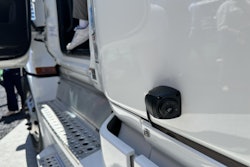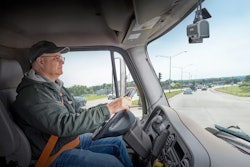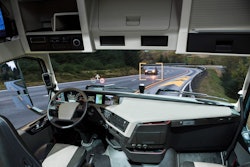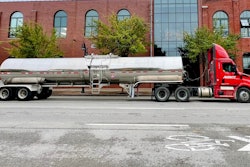I recently have been without my Yukon XL for two weeks while it was in the shop for a transmission rebuild.
I had to shift into my husband’s 2007 Ford sedan that he typically uses for his 45-minute daily commute, while he drove his truck to work so I could still have a vehicle that would hold the baby’s car seat. I did not realize how dependent I had become on the technology in my SUV: a backup camera, lane-keep assist, the camera I use to monitor my baby in the backseat, the push to start, the push button that automatically closes the liftgate, and primarily the two DVD players that keep my bigger kids entertained on even the shortest of drives.
It's true how dependent we become on technology.
The Owner-Operator Independent Drivers Association purports that technology – primarily pointing to automated transmission systems, lane keeping, collision avoidance and automatic braking systems – has created an environment among trucking companies that enables poor driving, negatively affecting safety.
In a whitepaper published by OOIDA that looks at the roots of high driver turnover in the U.S., the organization states that driver churn has led to reliance on these technologies to compensate for the lack of quality training that turnover creates as companies seek inexperienced drivers to fill seats.
The whitepaper says these technologies “reduce dependence on driver skill and judgment by taking control of their vehicle out of their hands,” and “rather than being able to focus on broadly enhancing operational efficiency or proactively improving driver safety, these technologies primarily aim to mitigate the risks associated with quickly trained, inexperienced operators.”
OOIDA goes on to say that this has led to the widespread adoption of driver-facing cameras aimed at controlling inexperienced drivers instead of directly addressing underlying issues like improving training quality.
While I can agree with OOIDA’s report that churn and turnover are the problem in the trucking industry rather than a driver shortage, I think the negative light shed on technology isn’t so black and white.
Yes, technology can be an enabler.
I’ve heard a friend say they feel more comfortable texting behind the wheel because their sedan’s lane keeping capability prevents them from drifting into another lane while their focus is on their phone rather than the road.
But I don’t think driver cameras are a means trucking companies use to avoid improving training or safety. I think they use them to supplement training and actually improve training quality. That is if they invest in a system that provides real-time driver alerts.
I once opted to use my former insurance provider's app that tracked speed and harsh braking so I could get a discount. I didn't feel like I was being watched but almost like it was a game that I failed when I went above the speed limit. Just having the reminder there helped me be more aware of my speed, which I think is the same for professional drivers monitored by cameras.
These technologies, while sometimes initially poorly received by drivers, can actually benefit driver recruitment and retention.
According to Samsara’s State of Connected Operations Report, 85% of respondents said modern technology tools have made their industry more desirable to younger workers. Obviously, keep in mind that this may not be in direct reference to driver cameras and that this report is by a technology company that benefits from the positive view of technology.
That said, I’ve heard from many drivers and safety leaders that driver cameras – both forward and inward facing – have been helpful with training as well as exoneration in the event of an accident.
And that’s because, in many (if not most) cases, these professional truckers are not at fault. Because they’re already practicing safe driving behavior.
They understand their job is dangerous. They understand the power they wield behind the wheel of a tractor trailer that could weigh up to 80,000 pounds.
That’s not to say there aren’t some bad apples out there. I know there are plenty of people who value the next dopamine hit they get from a reaction to a post on social media over safety in this overly connected world we live in. In most cases, though, I wouldn’t blame lack of quality training for that but instead the individual’s values.
I’ve said before that I wouldn’t want a camera on me while I work, but that doesn’t mean I don’t agree that it’s a valuable tool for training – not just inexperienced rookie drivers but the old-school tenured drivers who’ve become complacent in their habits.
So, does technology enable poor or unsafe driving? It’s a gray area.
You can say driver turnover has led to dependence on technology, and further technology was created to mitigate the effects of that. But then there will be issues with that technology that will lead to a different technological solution.
There will always be another problem to solve.










